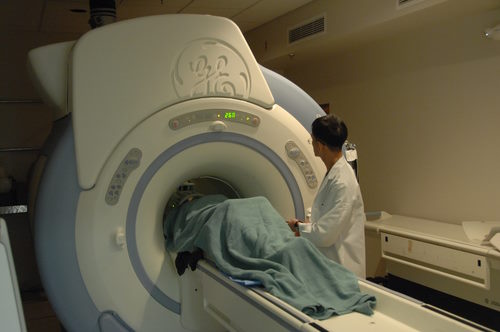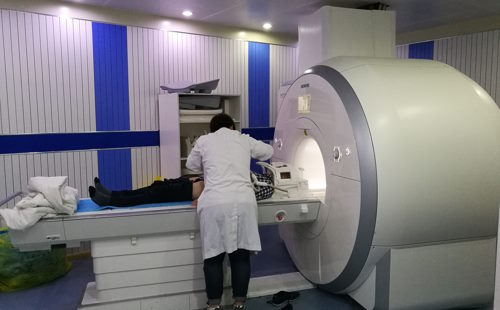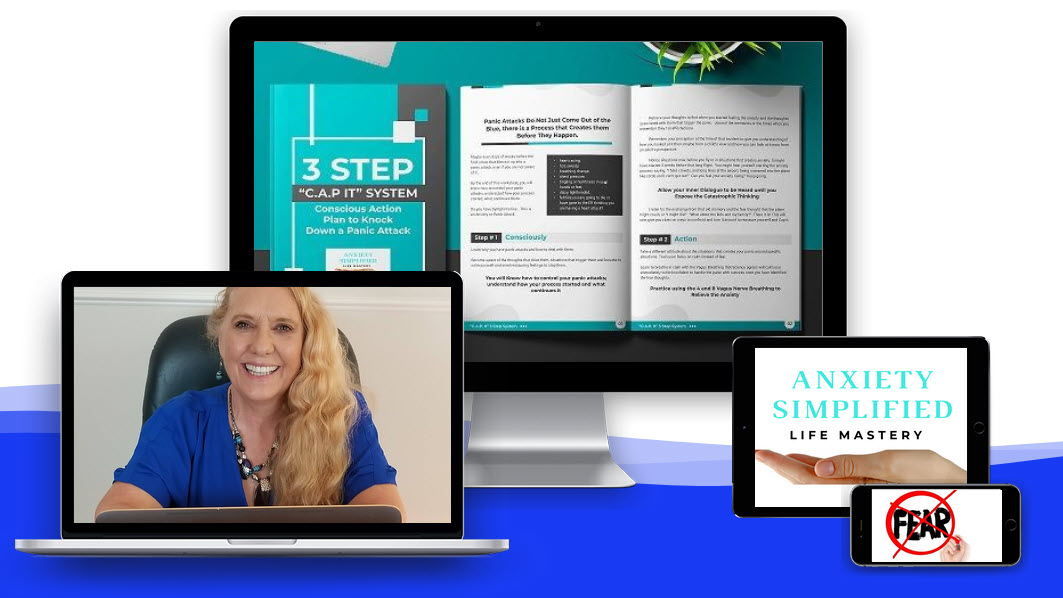MRI claustrophobia panic attack: Claustrophobia is defined as a fear of tight or dark spaces, but it may also be described as a dread of being trapped somewhere with no way out. The phobia is often connected to a fear of constraint or a fear of suffocation. According to the Psychological Medicine Journal, it affects approximately 9% of the US population, and while many people live without being formally diagnosed, they go to tremendous measures to avoid tight environments.
An MRI is often necessary if you want answers to nagging questions in your mind. However, the thought of lying in a tube for an extended period of time is absolutely unbearable if you have claustrophobia. It can cause MRI claustrophobia panic attack. In a study involving MRI techniques and people with claustrophobia, 13% experienced a full-fledged panic attack.

Avoiding an MRI Claustrophobia Panic Attack
How can you keep these panic attacks at bay? You'll be relieved to know that there are options available to you.
1
Ask questions ahead of time.
The more knowledgeable and aware you are about the MRI test's intricacies, the less likely you will be surprised by something you experience for the first time. Ask your doctor to explain the entire MRI technique so you know exactly what to expect - before, during, and after the procedure. It will do you no good if you don't speak out, so if you have any concerns, let your doctor or technologist know well in advance.
2
Listen to your favorite songs.
Inquire with your doctor if you can listen to some music while you’re undergoing the test. MRI scans are quite loud, and the sound alone can be physically unpleasant. If you have claustrophobia, you will struggle to deal with the confined feeling. You can distract your attention from the idea that you are in a small place by listening to relaxing music.
3
Cover your eyes.
Don't stare. You can simply keep your eyes closed or use an eye mask. Put on some music and conceal or close your eyes before entering the machine. Try to unwind, or better yet, sleep. You can keep your mind from wandering with nonsensical thoughts if you can block your eyes from noticing the constrained environment you are in.
4
Relax and meditate.
If you can put your focus on breathing deep, quiet breaths, you can avoid hyperventilating and having a panic attack throughout the exam. Deep, calming breathing while closing your eyes will keep you calm. When faced with a fear, most people can benefit from meditation or prayer to help them focus on good energy.
5
Bring someone you can rely on to the test.
An MRI scan in a room full of medical strangers may raise your chances of experiencing anxiety and distress associated with claustrophobia. On the other hand, knowing that someone you love and trust is in the room or the next room over can help to alleviate your anxiety and concern about the scan.
Consider inviting a loved one to the scan with you, whether it's your spouse, parent, child, or friend. Their presence alone can be reassuring and help you in remaining relaxed during the MRI.
6
Find out everything you can about the MRI machine.
Learning and getting interested about the MRI machine is another method to prepare for the operation. MRIs provide clear, three-dimensional (3D) images of the organs and tissues inside your body using powerful magnets and radiofrequency (RF) energy. There are various kinds of MRI machines, but the majority of them are fashioned like a long donut.
Newer machines are shorter and wider. They are specifically designed that way to alleviate claustrophobia in patients. An MRI scan carries a very low chance of any adverse occurrence.

7
Request a blanket.
If the exam allows it, you can request a blanket. When a blanket is wrapped firmly around the body, some patients report a sense of security and comfort. When some people are wrapped firmly in a blanket, their tension is reduced because the blanket functions as a relaxing release.
8
Stretch before you go into the machine.
During the MRI, you must remain as still as possible, which can be challenging for some people. While in the MRI, the impulse to stretch or modify your position can be overwhelming. Stretch your muscles and limbs to avoid this and be as comfortable as possible while in the machine.
9
Take your medication.
Sometimes, no matter how well you prepare, the anxiety feels too enormous to overcome on your own, and in that case, medication is available to help you relax. Discuss your claustrophobia with your doctor and request a sedative to help you get through. These sedatives may cause sleepiness, and many patients do fall asleep during the MRI. Make sure to notify the staff that you have taken a sedative so that they are informed, and that you have a driver to bring you home.
Stop Panic Attacks Now
This course is video based to be able to re listen to over and over again with a workbook to follow again or reuse you conquer one trigger you can see your progress to feel you can do this!
Take a Video 3 Step Course on how to Crush Panic Attacks with Joanne Williams, LCSW Learn from a 30-year mental health professional. Click this link to take your first steps out of having panic attacks forever.
10
Request a wide bore MRI scan, if possible.
Wide bore MRI scans are both shorter and wider, providing a more expansive imaging experience. If your MRI clinic offers this sort of MRI scan, ask the technologist if it may be accommodated for your scan. If you tell your doctor or technologist about your claustrophobia, they might be able to accommodate your request for a wide bore MRI scan. This way, you can considerably reduce the chances of your having an MRI claustrophobia panic attack.
11
Concentrate on your breathing.
Deep, steady, and controlled breathing has been shown in studies to considerably alleviate anxiety. Simple breathing exercises, meditation, or prayer, for example, can help you stay calm during the MRI scan.
Deep breathing heightens the vagal tone, or the activity of your vagus nerve, which controls your heart rate and nerve activity in your gut. When you are anxious, your heart rate increases and you may have stomach tightness. When your Vagus nerve is stimulated, your symptoms improve.
Breathing is our bodies #1 way to relax.
Learn the medically proven 4 and 8 Vagus Nerve breathing that sends a calming chemical into your body to calm you immediately. Check out Joanne’s Podcast with the medical researched explained. Anxiety Simplified Podcast # 46 iTunes on. 7 ways to Go from fight-or-flight into rest-and-digest within minutes told by scientists.
Final Word: Avoiding MRI Claustrophobia Panic Attack
Getting through an MRI when you have claustrophobia does not have to be a stressful experience with the appropriate preparation and equipment. The staff in most MRI facilities are compassionate and understanding of the anxiety associated with MRIs.
They will do everything they know to make you as comfortable as possible during the scan. Your MRI test can be trouble-free if you make the proper preparations.
Stop Panic Attacks Now
This course is video based to be able to re listen to over and over again with a workbook to follow again or reuse you conquer one trigger you can see your progress to feel you can do this!
Click this link to take your first steps out of having panic attacks forever. Take a >Video 3 Step Course on how to Crush Panic Attacks with Joanne Williams, LCSW< Learn from a 30-year mental health professional. In this course, the 2nd step teaches the Vagus breathing, to get that immediate calming.
However, if your panic episodes become regular or interfere with your life, it is a good idea to seek professional care. You can then concentrate on learning how to calm down after a panic attack, better managing them, and coping with the associated worries.
Contact Joanne Williams for a free 10-minute consultation on you best next step at 760-485-6784.
Disclaimer: This article is by no means a replacement for medical attention

